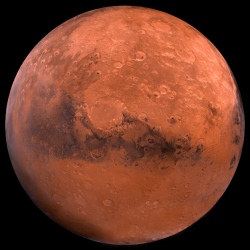
Getting astronauts to Mars will take all the spacefaring expertise the US can muster, including advanced propulsion technologies such as solar-electric engines and perhaps even nuclear rockets, according to NASA Administrator Charlie Bolden. Bolden stressed that he’d like to slash the travel time required to send astronauts to Mars.
"Right now it’s about an eight-month mission; we’d like to cut that in half," Bolden told reporters after speaking to Aerojet Rocketdyne workers for 30 minutes or so. Superfast propulsion tech would help limit astronauts’ radiation exposure during the trek to Mars and reduce the amount of water, food and other "consumables" such a mission would require, NASA officials have said.
Bolden was flanked by Aerojet Rocketdyne’s CEO and president Scott Seymour and Julie Van Kleeck, the company’s Vice President of Advanced Space & Launch Systems, during the news conference. The trio discussed the advanced solar-electric propulsion systems (SEP) the company has been working on.
"We’re now trying to get to higher power levels; that’s the next step," Seymour said, referring to the 5-kilowatt (kW) engines Aerojet Rocketdyne is currently building for NASA robotic missions. "Fifteen kilowatts would be the next step, and then to cluster them together … then, in the long term, 50 to 100 kilowatts."
"The limiting power of this type of propulsion has been the power to drive it," Bolden said. "Aerojet Rocketdyne has partnered with different entities around the country in looking [at] how to get more energy density onto a solar cell. The more power we can get, the larger we can make the engine and its capability.
